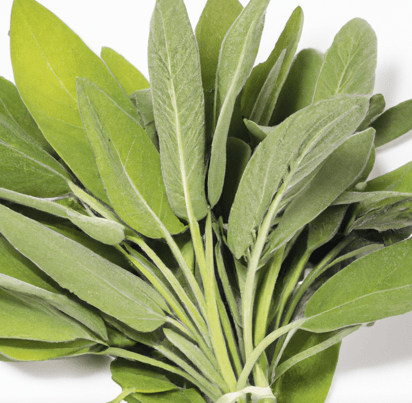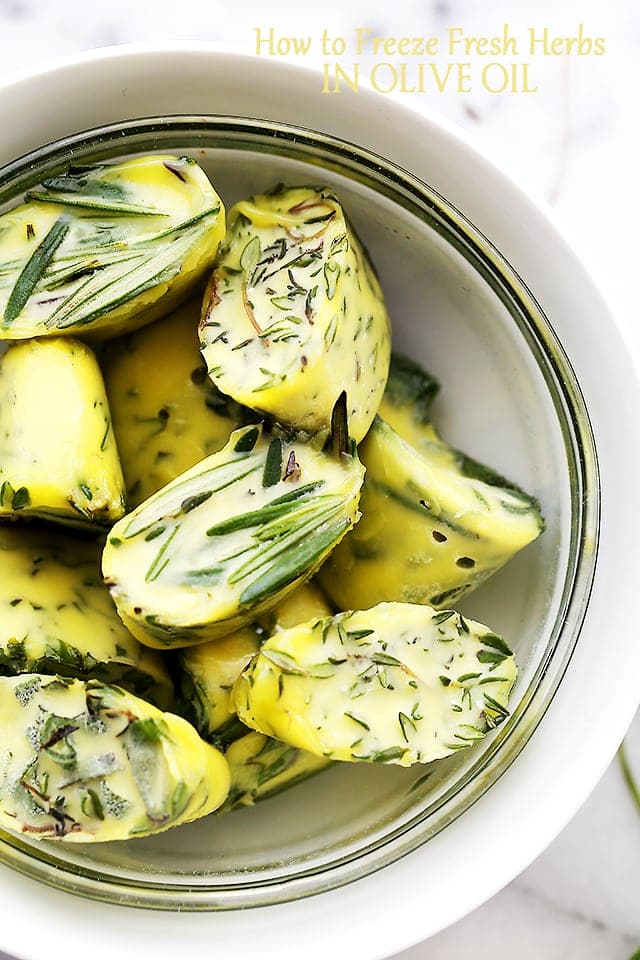Sage: Important Facts, Health Benefits, and Recipes
Explore the world of sage, a versatile aromatic herb with numerous health benefits, culinary uses, and practical tips for storage and substitution in our ultimate guide.

Best Sage Recipes
-

-

-

-

-

-

-

-

-
![How to Freeze Fresh Herbs in Olive Oil Image]()
-
![Herbed Ricotta Chicken Rollatini Image]()
-
![Kabocha Risotto Image]()
-
![Double Potato Casserole Image]()
-
![Leftover Turkey Frittata Image]()
-
![Marquis's Marvelous Stuffing Image]()
-
![Savory Chicken Pot Pie Image]()
-
![Cheesy Pumpkin Farro with Marcona Almonds Recipe Image]()
-
![Acorn Squash Shepherd's Pie Recipe Image]()
-
![Lemon Herb Roasted Pork Image]()
-
![Farmers' Market Bowl with Green Goddess Sauce Image]()
-
![Healthy Ham and Cheese Casserole with Apples and Sage Image]()
-
![Fried Oysters and Littleneck Clams Image]()
-
![Braised Chicken in Coconut Milk Image]()
-
![Swiss Steak Recipe Image]()
-
![Stuffed Pork Chops with Kielbasa and Sauerkraut Recipe Image]()
-
![Breakfast Casserole with Butternut Squash and Kale Recipe Image]()
-
![Wild Rice Stuffing Recipe Image]()
-
![Squid Ink Pasta with Pumpkin, Sage and Brown Butter Recipe Image]()
-
![Easiest Turkey Brine Recipe Image]()
-
![Garlic Sage Brown Butter Sauce Image]()
-
![Blackberry-Sage Lemonade Recipe Image]()
-
![Cider-Braised Chicken with Apples, Bacon, and Sage Recipe Image]()
-
![Cornbread Dressing With Sausage and Sage Recipe Image]()
-
![Butterflied Herb Chicken Recipe | Grilling Image]()
-
![Stuffed Pork Chops Recipe | Grilling Image]()
-
![Herb-Rubbed Crisp-Skinned Butterflied Roast Turkey Recipe Image]()
-
![Porchetta-Flavored Spatchcocked Turkey Recipe Image]()
-
![Prune and Apple Stuffing With Sausage and Chestnuts Recipe Image]()
-
![Spaghetti Squash Grilled Cheese Sandwiches Recipe Image]()
-
![Stuffing-Flavored Potato Chips Recipe Image]()
-
![Turkey Porchetta Recipe Image]()
-
![Instant Pot Butternut Squash Soup Image]()
-
![Pork, Caramelized Onions and Apples Recipe Image]()
-
![Slow-Roasted Smoked Goose Recipe Image]()
-
![Slow Cooker Pork Loin Recipe Image]()
-
![British Oxford Sausages or Bangers Image]()
-
![Garlic-Sage Steak Topping Recipe Image]()
-
![Oven Fried Chicken and Coating Mix Recipe Image]()
-
![Stuffed Veal Bird Rolls Recipe Image]()
















:max_bytes(150000):strip_icc()/__opt__aboutcom__coeus__resources__content_migration__simply_recipes__uploads__2006__06__swiss-steak-horiz-a-1800-0e339b79426d434184f87047e86c8c75.jpg)
:max_bytes(150000):strip_icc()/__opt__aboutcom__coeus__resources__content_migration__simply_recipes__uploads__2007__01__stuffed-pork-chops-kielbasa-horiz-1800-e7ca9385c9264d1097436ffd17137254.jpg)
:max_bytes(150000):strip_icc()/__opt__aboutcom__coeus__resources__content_migration__simply_recipes__uploads__2020__10__Pumpkin-Sage-Strata-LEAD-09-3b033d82622544efb1815919cb25d4bc.jpg)
:max_bytes(150000):strip_icc()/__opt__aboutcom__coeus__resources__content_migration__simply_recipes__uploads__2010__11__wild-rice-stuffing-horiz-a-1600-6f66c058d4184d3a84d8139e63374cbc.jpg)
:max_bytes(150000):strip_icc()/__opt__aboutcom__coeus__resources__content_migration__simply_recipes__uploads__2012__10__squid-ink-pasta-browned-butter-sage-horiz-a-1400-a3f90853f1464e5d8236bd7256f6895f.jpg)
:max_bytes(150000):strip_icc()/__opt__aboutcom__coeus__resources__content_migration__simply_recipes__uploads__2016__11__2016-11-08-Turkey-Brine-11-2623f0acc66f46518308c2c2b7eeb06e.jpg)
:max_bytes(150000):strip_icc()/sage-brown-butter-sauce-recipe-1375281-hero-01-6d217b4602bd43c2ac93f9835c29cec9.jpg)
:max_bytes(150000):strip_icc()/__opt__aboutcom__coeus__resources__content_migration__serious_eats__seriouseats.com__recipes__images__2012__06__20120618-lemonade-variations-08-1819a1ca20cf43509f64e74e02e762eb.jpg)
:max_bytes(150000):strip_icc()/__opt__aboutcom__coeus__resources__content_migration__serious_eats__seriouseats.com__recipes__images__2013__10__20130930-268035-apple-braised-chicken-edit2-bec2d15fde3a4cc3ac9fbb2c98bd4e9f.jpg)
:max_bytes(150000):strip_icc()/__opt__aboutcom__coeus__resources__content_migration__serious_eats__seriouseats.com__recipes__images__2015__11__20151102-cornbread-stuffing-vicky-wasik-22-1dd2cbe38dac4f7cb67ea84350f2b7ea.jpg)
:max_bytes(150000):strip_icc()/__opt__aboutcom__coeus__resources__content_migration__serious_eats__seriouseats.com__recipes__images__20090226-grilled-herb-chicken-63d6a8814b9946b3afce543ed9c95ab3.jpg)
:max_bytes(150000):strip_icc()/__opt__aboutcom__coeus__resources__content_migration__serious_eats__seriouseats.com__recipes__images__20091123-stuffed-pork-chops-cut-d630710020dc4a0f867d7e1c0e28a0e1.jpg)
:max_bytes(150000):strip_icc()/__opt__aboutcom__coeus__resources__content_migration__serious_eats__seriouseats.com__recipes__images__2014__11__20141106-thanksgiving-turkey-spatchcock-butterfly-herb-rubbed-08-4e2309ff9a374ada8e2cdbaebcf0ceb6.jpg)
:max_bytes(150000):strip_icc()/__opt__aboutcom__coeus__resources__content_migration__serious_eats__seriouseats.com__recipes__images__2016__10__20161025-spatchcock-turkey-porchetta-flavor-vicky-wasik-6-95175e7d1ade4aac9250eb941f42ec21.jpg)
:max_bytes(150000):strip_icc()/__opt__aboutcom__coeus__resources__content_migration__serious_eats__seriouseats.com__recipes__images__2015__12__20151212-goose-vicky-wasik-13-673273f60ca5405d980de1345cd74af1.jpg)
:max_bytes(150000):strip_icc()/__opt__aboutcom__coeus__resources__content_migration__serious_eats__seriouseats.com__recipes__images__2012__11__20121119-127677-Spaghetti-Squash-PRIM-25e0daae56a641d39a746320aa74e641.jpg)
:max_bytes(150000):strip_icc()/__opt__aboutcom__coeus__resources__content_migration__serious_eats__seriouseats.com__recipes__images__2013__11__20131112-stuffing-chips-10-7f45ec2ff2094a18b88aa4e602dde14a.jpg)
:max_bytes(150000):strip_icc()/__opt__aboutcom__coeus__resources__content_migration__serious_eats__seriouseats.com__recipes__images__2015__10__20131024-turkey-porchetta-recipe-thanksgiving20-2062-a16719606e3b48ae867ce441829dca21.jpg)
:max_bytes(150000):strip_icc()/instant-pot-butternut-squash-soup-5083037-hero-01-636674680d2944cbab887e05ad485f41.jpg)
:max_bytes(150000):strip_icc()/GettyImages-135596609-57c5518b5f9b5855e57387bf.jpg)
:max_bytes(150000):strip_icc()/smokedgoose-589e6ce55f9b58819c465152.jpg)
/pork-loin-roast-15-56b71fa15f9b5829f83691e4.jpg)
/bangers-oxford-sausages-recipe-1808520-hero-01-fa94c9ef9a8f4687bee5182b6456bc0b.jpg)
:max_bytes(150000):strip_icc()/steak-butter-d582c0a3958546d1a76b6b5df1caf16a.jpg)
:max_bytes(150000):strip_icc()/oven-fried-chicken-portions-on-a-plate-157564715-58475efb5f9b5851e5c1e89e.jpg)
:max_bytes(150000):strip_icc()/pork-rolls-and-vegetables-518147651-a32d923a149847f6a58b44f688663c8b.jpg)